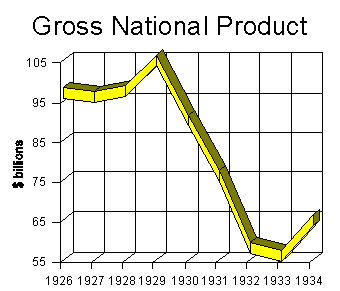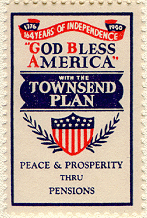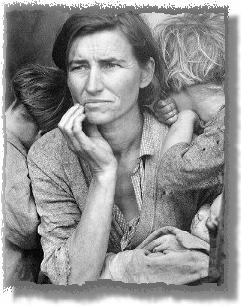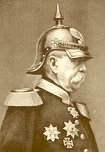|
Traditional Sources of Economic
Security
All peoples throughout all of human history have faced the uncertainties
brought on by unemployment, illness, disability, death and old age.
In the realm of economics, these inevitable facets of life are said
to be threats to one's economic security.
For the ancient Greeks economic security took the form of amphorae
of olive oil. Olive oil was very nutritious and could be stored
for relatively long periods. To provide for themselves in times
of need the Greeks stockpiled olive oil and this was their form
of economic security.
In medieval Europe, the feudal system was the basis of economic
security, with the feudal lord responsible for the economic survival
of the serfs working on the estate. The feudal lord had economic
security as long as there was a steady supply of serfs to work the
estate, and the serfs had economic security only so long as they
were fit enough to provide their labor. During the Middle Ages the
idea of charity as a formal economic arrangement also appeared for
the first time.
Family members and relatives have always felt some degree of responsibility
to one another, and to the extent that the family had resources
to draw upon, this was often a source of economic security, especially
for the aged or infirm. And land itself was an important form of
economic security for those who owned it or who lived on farms.
These then are the traditional sources of economic security: assets;
labor; family; and charity.
The Rise of Formal Systems of Economic
Security
As societies grew in economic and social complexity, and as isolated
farms gave way to cities and villages, Europe witnessed the development
of formal organizations of various types that sought to protect
the economic security of their members. Probably the earliest of
these organizations were guilds formed during the Middle
Ages by merchants or craftsmen. Individuals who had a common trade
or business banded together into mutual aid societies, or guilds.
These guilds regulated production and employment and they also provided
a range of benefits to their members including financial help in
times of poverty or illness and contributions to help defray the
expenses when a member died.
Out of the tradition of the guilds emerged the friendly societies.
These organizations began appearing in England in the 16th century.
Again organized around a common trade or business, the friendly
societies would evolve into what we now call fraternal organizations
and were the forerunners of modern trade unions.
In addition to the types of economic security provided by the guilds,
the fraternal organizations and some trade unions would begin the
practice of providing actuarially-based life insurance to their
members. The friendly societies and the fraternal organizations
would grow dramatically following the Industrial Revolution. By
the beginning of the 19th century one of out every nine Englishmen
belonged to one of these organizations.
Among early U.S. fraternal organizations that we are familiar with
even into the present day were: the Freemasons (which came to America
in 1730); the Odd Fellows (1819); Benevolent and Protective Order
of Elks (1868); Loyal Order of Moose (1888); and the Fraternal Order
of Eagles (1898).
The English "Poor Laws"
As the state began to assume responsibility for economic security,
the English began the development of a series of "Poor Laws"
adopted to provide help to the poor, as the problem of economic
security was seen primarily as a problem afflicting the poor.
The English Poor Law of 1601 was the first systematic codification
of English ideas about the responsibility of the state to provide
for the welfare of its citizens. It provided for taxation to fund
relief activities; it distinguished between the "deserving"
and the "undeserving" poor; relief was local and community
controlled; and almshouses were eventually established to house
those on relief. The law was at once both generous and harsh. Generous
in that it acknowledged the government's duty to provide for the
welfare of the poor, but harsh in that it viewed the poor as highly
undesirable characters and treated them accordingly.
There were a series of changes and "reforms" of the "Poor
Laws" over the years, but this essential structure was the
tradition the pilgrims brought with them when they journeyed to
the New World.
Economic Security in America
When the English-speaking colonists arrived in the New World they
brought with them the ideas and customs they knew in England, including
the "Poor Laws." The first colonial poor laws were fashioned
after those of the Poor Law of 1601. They featured local taxation
to support the destitute; they discriminated between the "worthy"
and the "unworthy" poor; and all relief was a local responsibility.
No public institutions for the poor or standardized eligibility
criteria would exist for nearly a century. It was up to local town
elders to decide who was worthy of support and how that support
would be provided.
As colonial America grew more complex, diverse and mobile, the
localized systems of poor relief were strained. The result was some
limited movement to state financing and the creation of almshouses
and poorhouses to "contain" the problem. For much of the
18th and 19th centuries most poverty relief was provided in the
almshouses and poorhouses. Relief was made as unpleasant as possible
in order to "discourage" dependency. Those receiving relief
could lose their personal property, the right to vote, the right
to move, and in some cases were required to wear a large "P"
on their clothing to announce their status.
Support outside the institutions was called "outdoor relief"
and was looked upon with distrust by most citizens. It was felt
that "outdoor relief" made things too easy on the poor
who should be discouraged from the habit of poverty in every way
possible. Nevertheless, since it was expensive to build and operate
the poorhouses, and since it was relatively easy to dispense
cash or in-kind support, some outdoor relief did emerge. Even so,
prevailing American attitudes toward poverty relief were always
skeptical and the role of government was kept to the minimum. So
much so that by as late as 1915 at most only 25% of the money spent
on outdoor relief was from public funds.
Old Age in Colonial America
Although the need for economic security affects all ages and classes
of society, one particularly acute aspect of this need is the problem
of old age and the possibility of retirement after a long life of
labor. Retirement, a feature of life we now take so much for granted,
was not always readily available, and it was a struggle to develop
adequate systems of retirement.
One of the first people to propose a scheme for retirement security
that is recognizable as a forerunner of modern social insurance
was Revolutionary War figure Thomas Paine. His last great pamphlet,
published in the winter of 1795, was a controversial call for the
establishment of a public system of economic security for the new
nation. Entitled, Agrarian Justice,
it called for the creation of a system whereby those inheriting
property would pay a 10% inheritance tax to create a special fund
out of which a one-time stipend of 15 pounds sterling would be paid
to each citizen upon attaining age 21, to give them a start in life,
and annual benefits of 10 pounds sterling to be paid to every person
age 50 and older, to guard against poverty in old-age.
Civil War Pensions: America's First
"Social Security" Program
Although Social Security did not really arrive in America until
1935, there was one important precursor, that offered something
we could recognize as a social security program, to one special
segment of the American population. Following the Civil War, there
were hundreds of thousands of widows and orphans, and hundreds of
thousands of disabled veterans. In fact, immediately following the
Civil War a much higher proportion of the population was disabled
or survivors of deceased breadwinners than at any time in America's
history. This led to the development of a generous pension program,
with interesting similarities to later developments in Social Security.
(The first national pension program for soldiers was actually passed
in early 1776, prior even to the signing of the Declaration of Independence.
Throughout America's ante-bellum period pensions of limited types
were paid to veterans of America's various wars. But it was with
the creation of Civil War pensions that a full-fledged pension system
developed in America for the first time.)
The Civil War Pension program began shortly after the start of
the War, with the first legislation in 1862 providing for benefits
linked to disabilities "incurred as a direct consequence of
. . .military duty." Widows and orphans could receive pensions
equal in amount to that which would have been payable to their deceased
solider if he had been disabled. In 1890 the link with service-connected
disability was broken, and any disabled Civil War veteran qualified
for benefits. In 1906, old-age was made a sufficient qualification
for benefits. So that by 1910, Civil War veterans and their survivors
enjoyed a program of disability, survivors and old-age benefits
similar in some ways to the later Social Security programs. By 1910,
over 90% of the remaining Civil War veterans were receiving benefits
under this program, although they constituted barely .6% of the
total U.S. population of that era. Civil War pensions were also
an asset that attracted young wives to elderly veterans whose pensions
they could inherit as the widow of a war veteran. Indeed, there
were still surviving widows of Civil War veterans receiving Civil
War pensions as late as 1999!
In the aggregate, military pensions were an important source of
economic security in the early years of the nation. In 1893, for
example, the $165 million spent on military pensions was the largest
single expenditure ever made by the federal government. In 1894
military pensions accounted for 37% of the entire federal budget.
(The Civil War pension system was not without
its critics.)
But these figures based on the federal budget exaggerate the role
of military pensions in providing overall economic security since
the federal government's share of the economy was much smaller in
earlier times. Also, there were features of the system which meant
that many veterans did not receive any benefits. For example, former
Confederate soldiers and their families were barred from receiving
Civil War pensions. So in 1910 the per capita average military pension
expenditure for residents of Ohio was $3.36 and for Indiana it was
$3.90. By contrast, the per capita average for the Southern states
was less than 50 cents (it was 17 cents in South Carolina).
Despite the fact that America had a "social security"
program in the form of Civil War pensions since 1862, this precedent
did not extend itself to the general society. The expansion of these
types of benefit programs to the general population, under Social
Security, would have to await additional social and historical developments.
The Company Pension
Prior to the rise of company pension plans, paternalistic companies
sometimes "graduated" older workers to token jobs at reduced
pay. A few paid some form of retirement stipend—but only if the
company was so inclined, since there were no rights to any kind
of retirement benefit. Most older workers were simply dismissed
when their productive years were behind them.
One of the first formal company pension plans for industrial workers
was introduced in 1882 by the Alfred Dolge Company, a builder of
pianos and organs. Dolge withheld 1% of each workers’ pay and placed
it into a pension fund, to which the company added 6% interest each
year. Dolge viewed providing for older workers as being a business
cost like any other, arguing that just as his company had to provide
for the depreciation of its machinery, he should also "provide
for the depreciation of his employees." Despite Mr. Dolge’s
progressive ideas and his best intentions, the plan proved largely
unsuccessful since it required a worker to spend many years in continuous
employment with the company, and labor mobility, then as now, meant
that relatively few workers spend their whole working career with
one company. Not only was the Dolge Plan one of the first formal
company pension systems in industrial America, it was also one of
the first to disappear when the company went out of business a few
years later.
The
biggest problem with company-provided pensions was that the percentage
of workers anticipating an employment-related pension from their
company or their union was tiny. Indeed, in 1900 there were a total of
five companies in the United States (including Dolge) offering their
industrial workers company-sponsored pensions. As late as 1932, only
about 15% of the laborforce had any kind of potential
employment-related pension. And because the pensions were often granted
or withheld at the option of the employer, most of these workers would
never see a retirement pension. Indeed, only about 5% of the elderly
were in fact receiving retirement pensions in 1932.
So the company
pension was an option not available to most Americans during the
time prior to the advent of Social Security.
The March of Coxey's Army
The Great Depression of the 1930s was not the only one in America's
history. In fact, it was the third depression of the modern era,
following previous economic collapses in the 1840s and again in
the 1890s. During the depression of the 1890s unemployment was widespread
and many Americans came to the realization that in an industrialized
society the threat to economic security represented by unemployment
could strike anyone--even those able and willing to work. Protest
movements arose--the most quixotic and notable being that of "Coxey's
Army."
| Jacob Coxey was an unsuccessful Ohio politician and industrialist
who, in 1894, called on the unemployed from all over the country
to join him in an "army" marching on Washington. Ten
of thousands of unemployed workers started marches, but by the
time Coxey and his group finally made it to Washington only
about 500 hard-core believers remained. Coxey himself was promptly
arrested for walking on the grass of the Capitol Building and
the protest fizzled out. Coxey later became an advocate of public
works as a remedy for unemployment and ran for president as
the Farmer-Labor party candidate in 1932 and 1936. (Coxey was
also an ardent proponent of the free-silver monetary policy
and an opponent of the gold standard. Perhaps to demonstrate
his earnestness on monetary issues he even named his son Legal
Tender Coxey!) |

|
Although his march failed, Coxey's Army was a harbinger of an issue
that would rise to prominence as unemployment insurance would become
a key element in the future Social Security Act. (Ohio would continue
to play an important role in the development of unemployment insurance
as its state program was one of two looked to as models for the new
federal program--the other being the program in operation in Wisconsin.)
State Old-Age Pensions
Following the outbreak of the Great Depression, poverty among the
elderly grew dramatically. The best estimates are that in 1934 over
half of the elderly in America lacked sufficient income to be self-supporting.
Despite this, state welfare pensions for the elderly were practically
non-existent before 1930. A spurt of pension legislation was passed
in the years immediately prior to passage of the Social Security
Act, so that 30 states had some form of old-age pension program
by 1935. However, these programs were generally inadequate and ineffective.
Only about 3% of the elderly were actually receiving benefits under
these states plans, and the average benefit amount was about 65
cents a day.
There were many reasons for the low participation in state-run
pension systems. Many elderly were reluctant to "go on welfare."
Restrictive eligibility criteria kept many poor seniors from qualifying.
Some jurisdictions, while having state programs on the books, failed
to actually implement them. Many of the state-passed pension laws
provided for counties within the state to opt to participate in
the pension program. As a result, in 1929 of the six states with
operating pension laws on the books only 53 of the 264 counties
eligible to adopt a pension plan actually did so. After 1929, the
States began enacting laws without county options. By 1932 seventeen
states had old age pension laws, although none were in the south,
and 87% of the money available under these laws were expended in
only three states (California, Massachusetts and New York).
America Changes
Despite all of the institutional strategies adopted in early America
to assure some measure of economic security, huge changes would
sweep through America which would, in time, undermine the existing
institutions. Four important demographic changes happened in America
beginning in the mid-1880s that rendered the traditional systems
of economic security increasingly unworkable:
- The Industrial Revolution
- The urbanization of America
- The disappearance of the "extended"
family
- A marked increase in life expectancy
The Industrial Revolution transformed the majority of working people
from self-employed agricultural workers into wage earners working
for large industrial concerns. In an agricultural society, prosperity
could be easily seen to be linked to one's labor, and anyone willing
to work could usually provide at least a bare subsistence for themselves
and their family. But when economic income is primarily from wages,
one's economic security can be threatened by factors outside one's
control--such as recessions, layoffs, failed businesses, etc.
Along with the shift from an agricultural to an industrial society,
Americans moved from farms and small rural communities to large
cities--that's where the industrial jobs were. In 1890, only 28%
of the population lived in cities, by 1930 this percentage had exactly
doubled, to 56%.
The year 1920 was a historical
tipping-point. In that year, for the first time in our nation's
history, more people were living in cities than on farms. |
This trend toward urbanization also contributed to another significant
shift in American society, the disappearance of the extended family
and the rapid rise of the nuclear family. Today we tend to assume
that "the family" consists of parents and children--the
so-called nuclear family. For most of our history, we lived in "extended
families" that included children, parents, grandparents and
other relatives. The advantage of the extended family was that when
a family member became too old or infirm to work, the other family
members assumed responsibility for their support. But when the able-bodied
left the farms to seek employment in the cities, often the parents
or grandparents stayed behind. And when new immigrants first arrived
in our land, it was often the breadwinner who first made the passage
and only later could he bring the family over.
And finally, another significant change happened in the early decades
of this century. Thanks primarily to better health care and sanitation,
and the development of effective public health programs, Americans
began to live significantly longer. In three short decades, 1900-1930,
average life spans increased by 10 years. This was the most rapid
increase in life spans in recorded human history. The result was
a rapid growth in the number of aged persons, to 7.8 million by
1935.
The net result of this complex set of demographic and social changes
was that America was older, more urban and more industrial, and
fewer of its people lived on the land in extended families. The
traditional strategies for the provision of economic security were
becoming increasingly fragile.
The Stock Market Crash & The
Great Depression
When the New York Stock Exchange opened on the morning of October
24, 1929, nervous traders sensed something ominous in the trading
patterns. By 11:00 a.m. the market had started to plunge. Shortly
after noon a group of powerful bankers met secretly at J.P. Morgan
& Co. next door to the Exchange and pledged to spend $240 million
of their own funds to stabilize the market. This strategy worked
for a few days, but the panic broke out again the following Tuesday,
when the market crashed again, and nothing could be done to stop
it.
Before three months had passed, the Stock Market lost 40% of its
value; $26 billion of wealth disappeared. Great American corporations
suffered huge financial losses. AT&T lost one-third of its value,
General Electric lost half of its, and RCA's stock fell by three-fourths
within a matter of months. (It would take 25 years for the stock
market to return to its pre-crash level following the 1929 crash.)
As America slipped into economic depression following the Crash
of 1929, unemployment exceeded 25%; about
10,000 banks failed; the Gross National Product declined from
$105 billion in 1929 to only $55 billion in 1932. Compared to pre-Depression
levels, net new business investment was a minus $5.8 billion in
1932. Wages paid to workers declined from $50 billion in 1929 to
only $30 billion in 1932.

Radical Calls
to Action
The decade of the 1930s found America facing the worst economic
crisis in its modern history. Millions of people were unemployed,
two million adult men ("hobos") wandered aimlessly around
the country, banks and businesses failed and the majority of the
elderly in America lived in dependency. These circumstances led
to many calls for change.
|
| This classic
photo of a Depression-era family captured the anguish of the
times. Photo by Dorothea Lange for the Resettlement
Administration-1936. |
Every Man a King:
Huey Long was Governor
of Louisiana from 1928 to 1932 and was elected to the U.S. Senate
in 1930. A nominal Democrat, Huey Long was a radical populist.
He wanted the government to confiscate the wealth of the nation's
rich and privileged. He called his program Share Our Wealth.
It called upon the federal government to guarantee every family
in the nation an annual income of $5,000, so they could have
the necessities of life, including a home, a job, a radio and
an automobile. He also proposed limiting private fortunes to
$50 million, legacies to $5 million, and annual incomes to $1
million. Everyone over age 60 would receive an old-age pension.
His slogan was "Every Man A King."
The Share Our Wealth program immediately became a movement.
Clubs were formed in every state in the nation. By 1935 the
movement claimed 27,000 local clubs with 7.7 million members. |
 |
The Townsend
Movement:
Francis E. Townsend was a lean, bespectacled
doctor from Long Beach, California. In 1933 he found himself unemployed
at age 66 with no savings and no prospects. This experience galvanized
him to become the self-proclaimed champion of the cause of the elderly.
He devised a plan known as the Townsend Old Age Revolving Pension
Plan, or Townsend Plan for short.
| The basic idea of the Townsend
Plan was that the government would provide a pension of
$200 per month to every citizen age 60 and older. The pensions
would be funded by a 2% national sales tax. There were three
eligibility requirements:
- the person had to be retired;
- "their past life is free from habitual criminality;"
- the money had to be spent within the U.S. by the pensioner
within 30 days of receipt.
Dr. Townsend published his plan in a local
Long Beach newspaper in early 1933 and within about two
years there were 7,000 Townsend Clubs around the country
with more than 2.2 million members actively working to make
the Townsend Plan the nation's old-age pension system. |

|
Following the passage of
the Social Security Act in 1935, most of these alternative
pension schemes disappeared as quickly as they had arisen.
The Townsend Plan, however, hung around at least until the
passage of the 1950 Amendments to the Social Security program,
which made benefits much more generous and finally took the
last of the steam out of the Townsend movement. But as late
as November 1949, in the House of Representatives 179 members
signed a discharge petition to force a floor vote on the Townsend
Plan--barely 39 members short of the number needed to force
the House to consider the final version of the Townsend Plan
as a replacement for the Social Security system. |
Fire & Brimstone:
Another influence on Depression-era
public policy was the Union for Social Justice movement led
by a radio preacher by the name of Father
Charles E. Coughlin. Father Coughlin had a weekly radio
program with 35-40 million listeners which he used to mix a
little religion with a lot of politics. His enemies, in addition
to the devil himself, were Roosevelt, international bankers,
communists, and labor unions, and he was not shy in describing
them in interchangeable terms. At the height of his popularity,
Father Coughlin had a greater share of the weekly broadcast
audience than Howard Stern, Rush Limbaugh, Paul Harvey and Larry
King combined.
Although Father Coughlin's main effort was to pillory his enemies,
he did have a broad program of social reforms that included
a deliberate inflation of the currency and the nationalization
of all banks. He was also an anti-Semite and isolationist whose
views were so extreme that the Catholic Church finally censured
him and forced him to cease his political activities. In 1936,
Coughlin, along with Townsend and the remnants of Huey Long's
Share the Wealth Movement, would join to form a third party
to contest the presidential election in the hopes of preventing
President Roosevelt from being re-elected. |
 |
A Writer &
his EPIC:
Upton Sinclair was a famous novelist and
social crusader from California , and an avowed Socialist, who
in 1933 was asked by a dissident group of Los Angeles Democrats
to help them draft a platform proposal for dealing with the state's
economic problems. They were so impressed by Sinclair's plan--which
he christened the End Poverty in California, or EPIC plan--that
they persuaded him to change his registration to Democratic and
to run for the party's nomination for governor in 1934.
| Sinclair's EPIC scheme
was a 12-point program to remake the Californian economy. It
involved the issuance of scrip currency, the creation of large
state-run bartering enterprises, a tax on idle land and floating
a large state bond for $300 million. Point 10 of the plan was
a proposal to give pensions of $50 a month to all needy persons
over 60 who had lived in California for at least three years.
There was a state pension plan in operation in California at
the time, but its benefits were very low, and the eligibility
requirements were so severe that most elderly Californians could
not qualify. (This was true of many of the state pension programs
around the country.) Sinclair's pension proposal was very popular
because in one fell swoop it reduced the minimum age for pensions
by 10 years, almost doubled their value, and eliminated restrictive
eligibility requirements. |
 |
Sinclair's EPIC program, and especially its pension proposal, had
a great appeal in Depression-weary California. Sinclair and his
supporters organized EPIC clubs, published newsletters, formed ad
hoc organizations and found a large chorus of supporters with unlimited
enthusiasm for his ideas. In short order, Upton Sinclair's EPIC
movement captured the Democratic party and Sinclair became the Democratic
nominee for governor in the election of 1934. The party's platform
became the EPIC program, including the pension plan.
When the votes were counted, Upton Sinclair got 37% of the vote,
the Republican candidate got 48% and a third-party progressive candidate
took another 13%. Had it been a two-man race, Upton Sinclair might
have become Governor of California and the EPIC pension plan might
well have become the California model.
Other Movements:
Other movements included Ham & Eggs, General Welfare Federation of America, and Technocracy.
|























